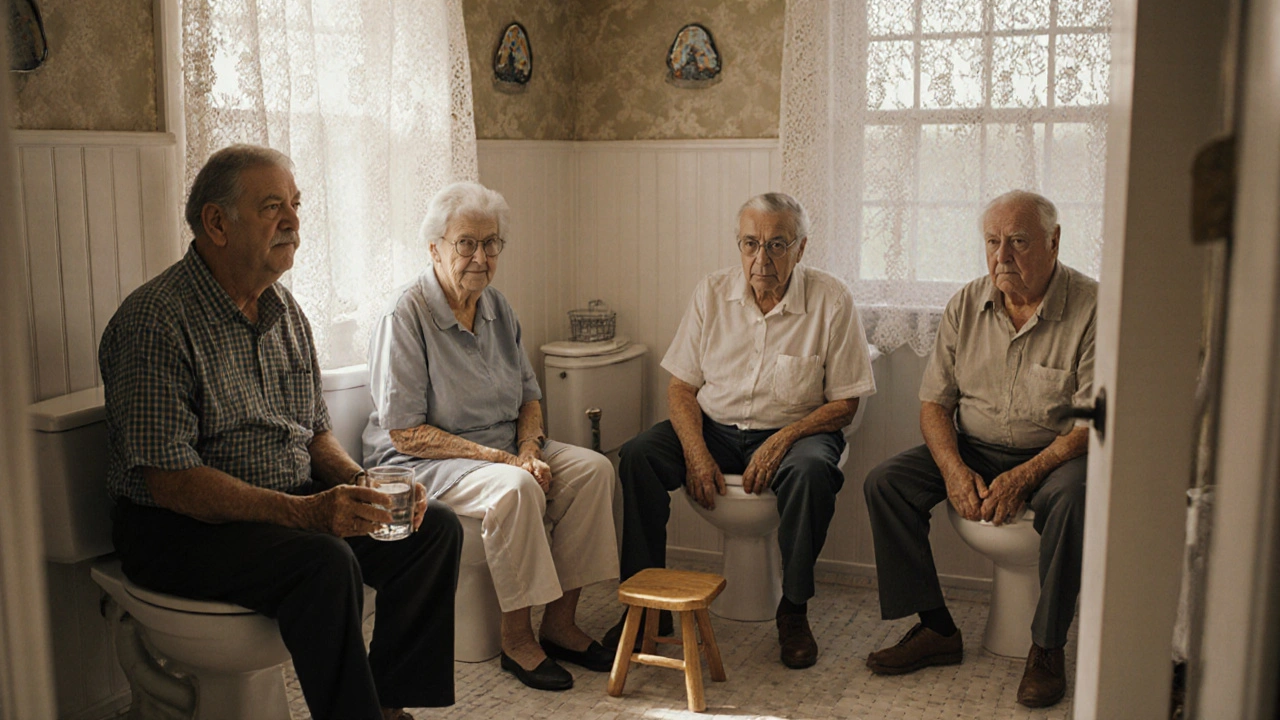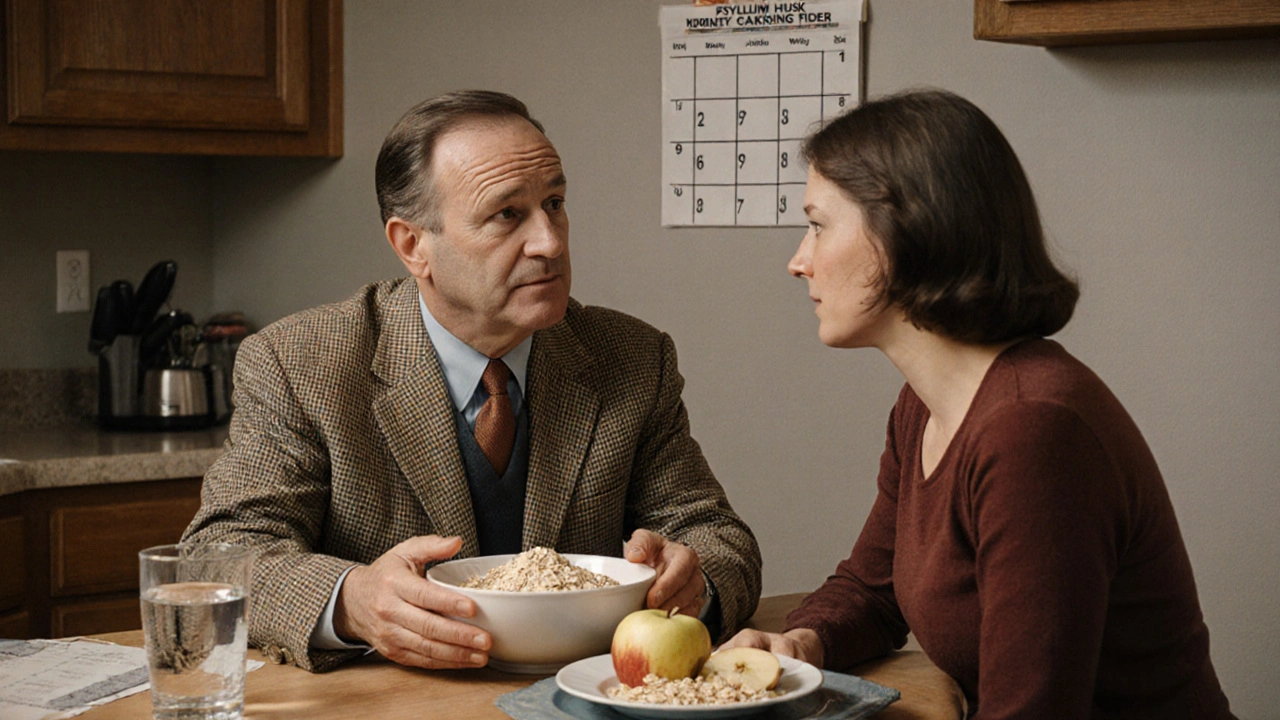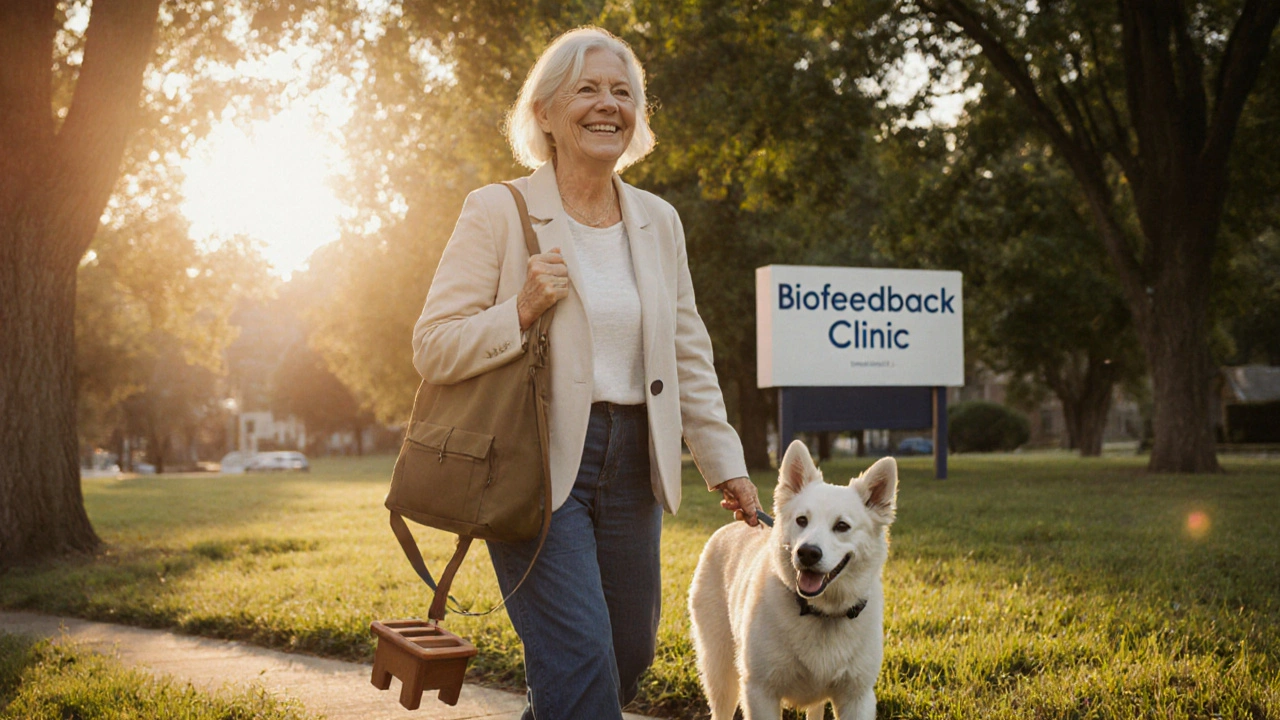Constipation: Causes, Laxatives, and Long-Term Management
 Nov, 14 2025
Nov, 14 2025
What Really Causes Constipation?
Constipation isn’t just about not going to the bathroom often enough. It’s when stools are hard, dry, and painful to pass-or when you feel like you haven’t fully emptied your bowels, even after trying. Medically, it’s defined as having fewer than three bowel movements a week. But for many people, it’s not the frequency that matters-it’s the struggle.
Around one in three people in clinical settings deal with it regularly. In the U.S., over 2.5 million people see a doctor for constipation every year. It’s not rare. It’s not just "eating too little fiber." It’s often a mix of lifestyle, medications, and underlying health issues.
When waste moves too slowly through the colon, too much water gets pulled out. That’s what turns soft stool into pebbles. Normal transit time is 24 to 72 hours. In slow transit constipation, it can stretch past 72 hours-sometimes even 120 hours. That’s when your colon just stops pushing.
But here’s the thing: not everyone with constipation has slow transit. About 60% of chronic cases are called "normal transit constipation." Your colon moves fine, but your pelvic floor muscles don’t relax properly when you try to go. You strain. You feel incomplete. You might even push harder and make it worse.
And then there’s the hidden players: medications. Opioids? Up to 95% of users get constipated. Calcium channel blockers, tricyclic antidepressants, iron pills-even some antacids-can throw off your system. Diabetes? Nearly 60% of people with it deal with constipation. Hypothyroidism, Parkinson’s, multiple sclerosis, spinal injuries-all of these can slow down your gut.
Women are more likely to have it. Older adults? Even more so. After age 60, the risk goes up by about 1.5% every year. And if you’ve had a stroke, COPD, or heart disease, your odds jump too.
Types of Laxatives-And Which Ones Actually Work
Laxatives aren’t all the same. They don’t all work the same way. And using the wrong one can make things worse.
Bulk-forming laxatives like psyllium (Metamucil) or methylcellulose (Citrucel) absorb water and swell up, making stool bigger and softer. They’re great for normal transit constipation. But here’s the catch: you must drink enough water. At least 8 ounces with every dose. Skip that, and you risk a blockage. About half of people using them see improvement.
Osmotic laxatives pull water into the colon. Polyethylene glycol (PEG 3350, aka MiraLAX) is the gold standard. It’s safe for long-term use, gentle, and works for 65-75% of people. The usual dose is 17 grams a day. Lactulose and magnesium hydroxide are also osmotic, but they can cause bloating or cramping. PEG doesn’t usually do that.
Stimulant laxatives like senna or bisacodyl (Dulcolax) force your colon to contract. They work fast-often within 6-12 hours. Great for short-term relief. But if you use them for more than 12 weeks, you risk something called "cathartic colon." Your colon stops responding. It becomes lazy. The American Gastroenterological Association says to avoid stimulants longer than 3 months.
Stool softeners like docusate sodium (Colace) are popular, but they’re not as effective as people think. Studies show they’re only 10-15% better than a placebo. Don’t rely on them alone.
For stubborn cases, doctors turn to prescription options. Lubiprostone (Amitiza), linaclotide (Linzess), and plecanatide (Trulance) work by activating chloride channels in the gut. They increase fluid secretion, which softens stool naturally. They’re not cheap-Linzess costs over $1,000 a month without insurance-but they help 40-60% of people who’ve tried everything else.
Why Fiber Alone Won’t Fix It
"Eat more fiber" is the first thing every doctor says. And it’s true-you need 25 to 30 grams a day. But the average American eats only about 15 grams. So yes, increasing fiber helps.
But here’s the problem: most people go from 15 grams to 30 grams overnight. Big mistake. That can cause bloating, gas, and even worse constipation in 30-40% of people. The trick is to add fiber slowly-5 grams every 3 to 4 days. Give your gut time to adjust.
Not all fiber is the same. Soluble fiber-found in oats, beans, apples, and flaxseed-holds water and makes stool softer. Insoluble fiber-like wheat bran-adds bulk. You need both. But soluble fiber is gentler on sensitive systems.
And fiber without enough water is useless. For every 5 grams of extra fiber, you need an extra 250-500 mL of water. If you’re taking psyllium and drinking only one glass of water, you’re setting yourself up for trouble.
Real-world example: a 52-year-old woman in a case study got her constipation under control with 25 grams of psyllium husk daily, 2 liters of water, morning coffee (which triggers the gastrocolonic reflex), and sitting on a footstool for 10 minutes after breakfast. It took 8 weeks. Not magic. Just consistency.

How to Train Your Body to Go
It’s not just about what you eat or what pills you take. Your body needs to learn when and how to go.
Try this: sit on the toilet for 10-15 minutes after breakfast. Why breakfast? That’s when your colon is most active thanks to the gastrocolonic reflex-the natural urge triggered by eating. Don’t rush. Don’t strain. Just sit.
And here’s a simple trick that works: put your feet on a small stool. Elevate your knees above your hips. That puts your pelvis in a 35-degree angle-closer to squatting. Studies show this reduces straining by 60%. You’re not just sitting. You’re positioning your body for natural elimination.
If you have pelvic floor dysfunction, biofeedback therapy can help. It’s like physical therapy for your butt. Sensors tell you when you’re pushing wrong. You learn to relax the right muscles. After 6-8 weekly sessions, 70-80% of people see major improvement. It’s not quick. But it’s lasting.
And don’t ignore movement. Walking 20-30 minutes a day helps stimulate bowel activity. You don’t need to run a marathon. Just move.
When to Worry-And When to See a Doctor
Constipation is usually harmless. But some signs mean something more serious is going on.
See a doctor if you have:
- Unintentional weight loss of 10 pounds or more
- Blood in your stool
- Change in bowel habits lasting more than 6 weeks
- Family history of colorectal cancer
These are "alarm symptoms." They don’t mean you have cancer. But they mean you need tests-colonoscopy, blood work, maybe anorectal manometry or a colonic transit study.
And if you’ve tried fiber, water, osmotic laxatives, and behavioral changes-and you’re still stuck-you might have refractory constipation. That’s when symptoms persist despite using one or more laxatives. It affects 15-20% of patients. At that point, you need a specialist. A gastroenterologist who understands motility disorders.
Don’t assume it’s "just aging." Don’t accept pain as normal. If you’re taking multiple laxatives every day and still not feeling right, it’s time for a deeper look.

Long-Term Management: Beyond the Pill
Long-term constipation management isn’t about finding the "best" laxative. It’s about building a system that works for your body.
Start with the basics: water, fiber, movement, and timing. Then add osmotic laxatives like PEG if needed. If that’s not enough, combine it with a low-dose stimulant-like senna twice a week-not daily. That reduces dependency risk.
For those with pelvic floor issues, biofeedback is the most effective long-term solution. It doesn’t require pills. It retrains your body.
And if you’re on opioids, talk to your doctor about adding a stool softener or PEG from day one. Don’t wait until you’re stuck.
For severe, rare cases-less than 1%-surgery like colectomy might be considered. But only after every other option fails.
And yes, the cost matters. Biofeedback sessions run $100-$150 each. Prescription meds like Linzess are expensive. But the real cost? Lost time, discomfort, anxiety, missed work. Investing in the right plan saves more than money-it saves your quality of life.
What’s New in Constipation Care
Science is catching up. In 2022, the FDA approved tenapanor (Ibsrela), a new drug that blocks sodium absorption in the gut, increasing fluid naturally. It’s for IBS with constipation and works for about 45% of users.
Researchers are also looking at the gut microbiome. A 2023 NIH project found that people with chronic constipation often have lower levels of a specific bacteria called Bacteroides uniformis. Probiotics targeting this might be the next big thing.
And there’s tech: AI-powered apps are being tested to analyze how you push during bowel movements using smartphone sensors. Early results show 85% accuracy in spotting pelvic floor dysfunction. No expensive machines needed-just your phone.
The big picture? Constipation isn’t going away. With aging populations and rising diabetes rates, prevalence is expected to grow 12% by 2030. The solution isn’t just more laxatives. It’s better education, earlier intervention, and personalized care.

Cassaundra Pettigrew
November 16, 2025 AT 00:10Also, why is no one talking about glyphosate in our bread? That stuff kills your gut flora. I’ve seen it firsthand. Your ‘Bacteroides uniformis’? Gone. Because Monsanto owns your colon now.
Brian O
November 17, 2025 AT 12:45Also, PEG 3350 is a lifesaver. I used to rely on senna like a crutch-bad idea. Now I do 17g daily, drink a gallon of water, and walk after dinner. It’s boring as hell, but it works. No drama. No side effects. Just… regular.
Steve Harvey
November 18, 2025 AT 04:40Also, the FDA approved tenapanor? That’s just a rebranded version of the old sodium-blocking tech they used in the 2008 water rationing program. They’re testing it on us again. Wake up.
Gary Katzen
November 18, 2025 AT 07:54And yeah, I’m gonna try biofeedback. It sounds weird, but if it’s 70-80% effective, it’s worth a shot. I’m tired of feeling like my body’s broken.
ryan smart
November 18, 2025 AT 22:15